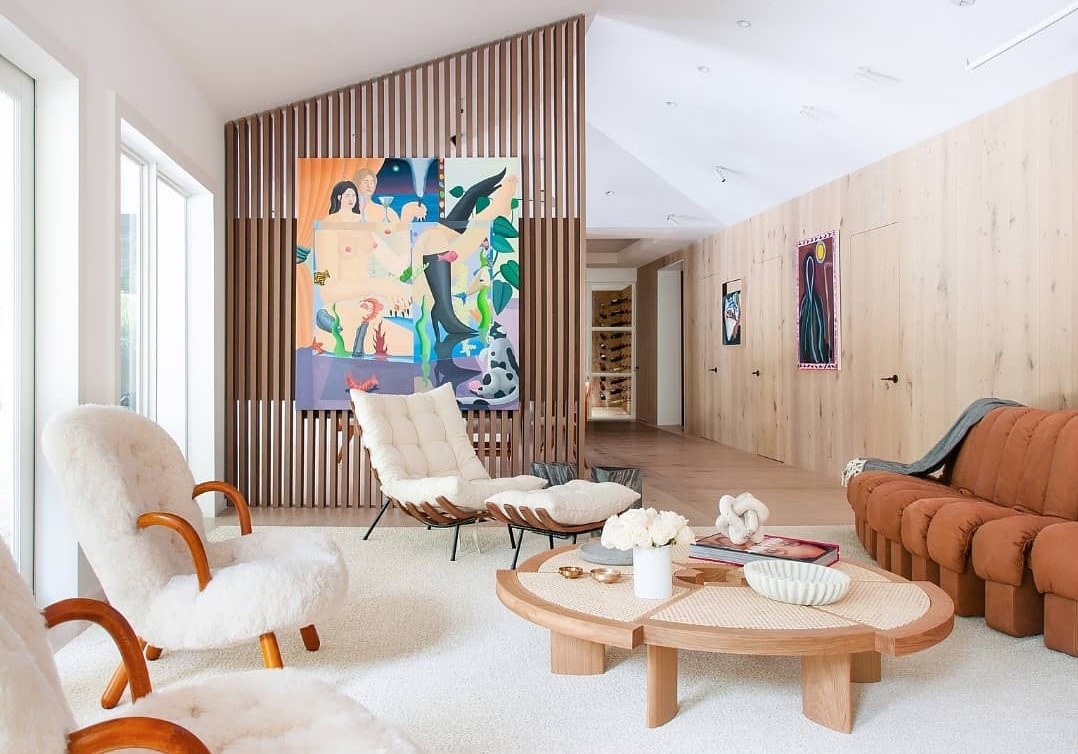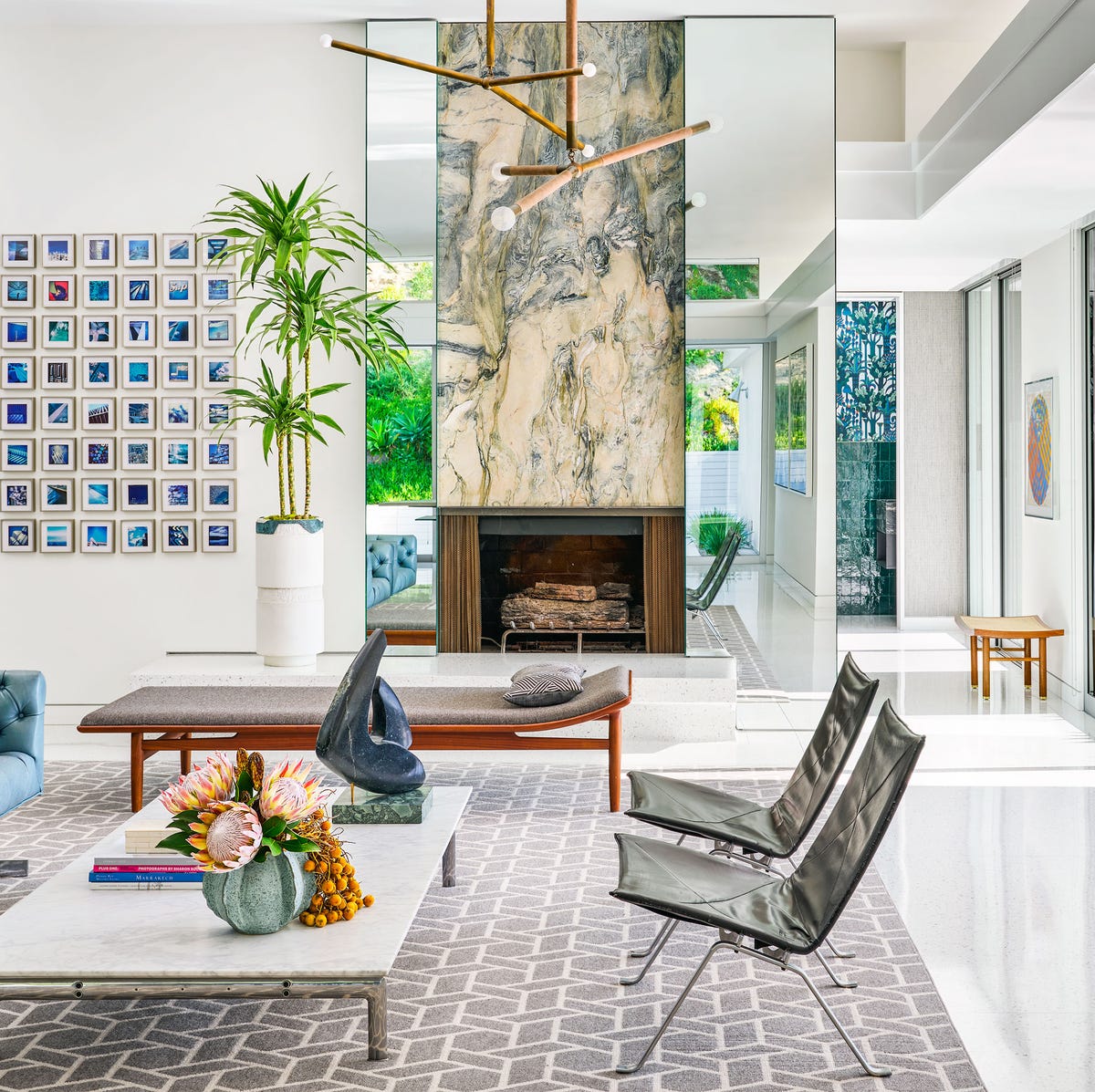
Step back in time and immerse yourself in the elegant and timeless style of mid-century interior design. The 1950s was a pivotal period for design, as post-war optimism and emerging technology gave rise to a new era of modern living. Mid-century design is characterized by clean lines, functional spaces, and a focus on bringing the outside in through large windows and open floor plans.
One of the defining features of mid-century design is the use of organic materials such as wood, leather, and natural fabrics. These materials, combined with warm earth tones and muted colors, create a sense of comfort and coziness in the home. The iconic furniture of this era, which often features tapered legs and sleek silhouettes, continues to be highly sought after and is considered a staple of mid-century design.
Mid-century design also emphasizes the idea of form meeting function. Furniture and decor pieces are designed with both style and practicality in mind. This era saw the introduction of innovative storage solutions, such as built-in cabinets and wall units, which helped to declutter spaces and create a seamless aesthetic. Additionally, the open floor plans and multi-purpose rooms that were popular during this time allowed for greater flexibility and adaptability in the home.
Whether you’re a fan of the clean lines and minimalist aesthetic or you’re drawn to the nostalgia and charm of the 1950s, mid-century interior design offers a timeless style that continues to captivate and inspire. So why not embrace the style of the past and create a space that is both elegant and functional? With its enduring appeal, mid-century design is sure to make a statement in any home.
The Origins of Mid Century Interior Design

The mid-century interior design style emerged in the 1950s, as a response to the changing social and cultural landscape of the time. It was influenced by a variety of factors, including post-war optimism, technological advancements, and a desire for simplicity and functionality.
One of the major influences on mid-century interior design was the Bauhaus movement, which emphasized the combination of form and function. Bauhaus designers believed that good design should be accessible to all, and they sought to create practical and beautiful objects for everyday use.
Another influential movement was Scandinavian design, which emphasized clean lines, natural materials, and minimalism. Scandinavian designers embraced the use of light and space, creating interiors that were airy and welcoming.
The mid-century style also drew inspiration from the organic forms and natural materials used in the work of Frank Lloyd Wright and other architects associated with the American Arts and Crafts movement. These designers believed in the integration of architecture and nature, and they sought to create harmonious environments that blurred the boundaries between indoors and outdoors.
Mid-century interior design also reflected the post-war economic boom, as consumers sought to create modern and stylish homes. It was characterized by a mix of new and old materials and furnishings, with an emphasis on sleek lines, geometric shapes, and bold colors.
Overall, mid-century interior design emerged as a response to the changing times, incorporating elements of modernism, simplicity, and functionality. It remains a popular style today, known for its timeless appeal and enduring influence on design.
Key Elements of Mid Century Interior Design
Mid century interior design is characterized by its sleek lines, organic shapes, and minimalist aesthetic. It emerged in the 1950s and remains a timeless style that is still popular today. Here are some key elements that define mid century interior design:
Simplicity
One of the main principles of mid century design is simplicity. Clean lines and minimalistic forms are often used to create an uncluttered and balanced space. Furniture and decor pieces are typically sleek and simple, with little to no ornamental details.
Natural Materials
Natural materials such as wood, leather, and metal are commonly used in mid century interior design. These materials not only add warmth and texture to the space but also reflect the organic sensibility of the style. Furniture pieces often feature beautifully grained wood and metal accents.
Functionality
Functionality is another key element of mid century design. The furniture and decor pieces are not only visually appealing but also practical and well-designed. Mid century designers believed that form should follow function, and this is reflected in the clean and functional designs of the furniture.
Iconic Furniture Pieces
Mid century interior design is known for its iconic furniture pieces. Designs by famous designers such as Charles and Ray Eames, Eero Saarinen, and Hans Wegner have become timeless classics. These pieces often feature innovative shapes and materials, adding an element of uniqueness to the space.
In conclusion, mid century interior design is characterized by simplicity, the use of natural materials, functionality, and iconic furniture pieces. By incorporating these key elements into your own space, you can achieve a timeless and stylish mid century look.
The Enduring Appeal of Mid Century Interior Design
Mid century interior design continues to captivate homeowners and designers alike with its timeless style and sophisticated appeal. The design movement, which emerged in the 1950s, is characterized by clean lines, minimalist aesthetics, and a focus on functionality.
One of the reasons why mid century interior design has endured throughout the decades is its ability to seamlessly blend with contemporary styles. The minimalistic approach and neutral color palette of mid century design make it a versatile choice for modern homes.
Moreover, mid century design is known for its emphasis on quality craftsmanship and materials. From iconic furniture pieces like the Eames Lounge Chair to sleek teak wood cabinets, mid century interiors are filled with pieces that were built to last. This commitment to quality has made mid century design a popular choice for those seeking longevity and durability in their home decor.
In addition, mid century interior design offers a sense of nostalgia and retro charm. The style has a distinctive vintage feel that evokes the glamour and optimism of the post-war era. The sleek lines, organic shapes, and use of bold colors embody the spirit of the 1950s and 1960s, creating a sense of timelessness and nostalgia in any interior.
Furthermore, mid century design is celebrated for its integration of nature and the outdoors. The use of natural materials like wood and stone, as well as large windows and open floor plans, bring the beauty of the natural world into the home. This connection to nature not only creates a calming and peaceful atmosphere, but also reflects the desire for harmony between the built environment and the surrounding landscape.
Overall, the enduring appeal of mid century interior design can be attributed to its timeless style, versatility, quality craftsmanship, retro charm, and connection to nature. Whether used in its original form or adapted to fit modern aesthetics, mid century design continues to inspire and delight homeowners and designers around the world.
